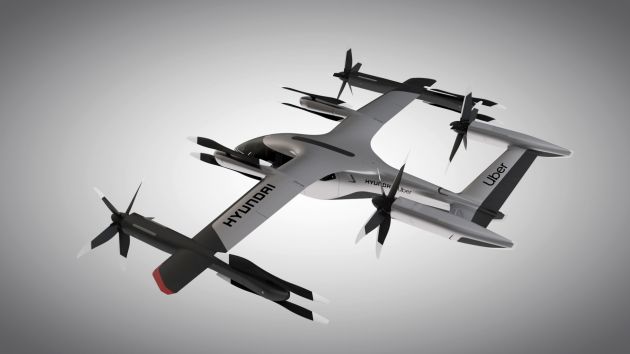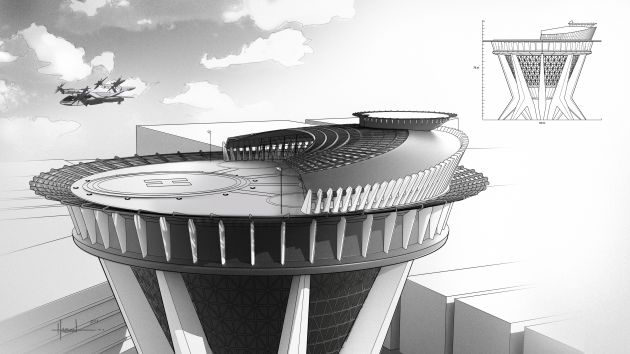Hyundai has unveiled the S-A1 Urban Air Mobility concept at the 2020 Consumer Electronics Show (CES), alongside the announcement of its new partnership with Uber for the development of Uber Air Taxis for a future airborne ride-sharing network. Hyundai is also the first automotive company to join the Uber Elevate initiative, which saw Uber partner with manufacturers such as Bell, Embraer and Aurora Flight Services, a Boeing subsidiary.
The S-A1 is an electric vertical take-off and landing (eVTOL) aircraft built for ride-sharing purposes, designed for a cruising speed of 290 km/h at cruising altitudes between 300 metres to 600 metres above ground, and is capable of flights of up to 100 km at once, says Hyundai. The eVTOL craft will require between five to seven minutes of recharging during peak hours.
A layout with multiple rotors and propellers distributed across the airframe is used in order to increase safety by decreasing the likelihood of failure at any single point, says Hyundai. Using several, smaller rotors powered by electric drive also reduces noise production relative to conventional, large-rotor helicopters with combustion engines, an important trait for its usage in cities.
“Our vision of Urban Air Mobility will transform the concept of urban transportation. We expect UAM to vitalize urban communities and provide more quality time to people, and we are confident that Uber Elevate is the right partner to make this innovative product readily available to as many customers as possible,” said executive vice president and head of urban air mobility at Hyundai, Jaiwon Shin, an aeronautics engineer who joined from NASA last September.
As its designation suggests, the S-A1 is designed to take off vertically and then transition to fixed-wing generated lift in cruise, before transitioning to a vertical descent for landing. The Hyundai S-A1 seats four passengers in a layout which enables riders to board and disembark easily, as well as to avoid the unpopular middle seat positioning of conventional automobiles while allowing enough space for one personal bag or backpack per rider.
Initially, the S-A1 has been designed to fly under pilot operation, though in time the vehicles will become autonomous, said Hyundai. Military aircraft which operated in a similar manner include the Hawker Siddley Harrier, which tilts its jet nozzles, and the Bell-Boeing V-22 Osprey, which like the Hyundai S-A1, tilts its rotors to change between vertical and horizontal operation.
Hyundai aims to head into the era of seamless mobility by exploring the incorporation of the electric personal air vehicle concept with the purpose built vehicle (PBV) concept, a new form of ground transportation, says the manufacturer.
“Hyundai is our first vehicle partner with experience of manufacturing passenger cars on a global scale. We believe Hyundai has the potential to build Uber Air vehicles at rates unseen in the current aerospace industry, producing high quality, reliable aircraft at high volumes to drive down passenger costs per trip,” said head of Uber Elevate, Eric Allison.
Uber has signed Space Act Agreements with NASA for the development of new unmanned traffic management concepts and unmanned aerial systems, and another to explore concepts and technologies for urban air mobility such as the Hyundai S-A1. According to the ride-sharing company’s analysis, after several years in the market, an Uber Elevate ride will cost the same as an UberX trip of the same distance.
Source: Read Full Article




